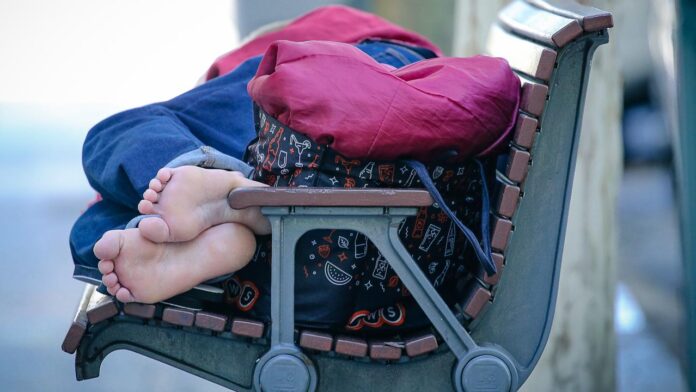[ad_1]
One group of young Australians is spending up to 94 per cent of their income on rent alone, with two conditions in two capital cities getting worse.
Young income support recipients in Perth and Brisbane are worse off than a year ago despite support payments increasing in last year’s federal budget, analysis by Homelessness Australia shows.
A 16 to 17-year-old receiving youth allowance of about $639 a fortnight or rent assistance is now spending more than 75 per cent of that income on rent in Sydney, Brisbane, Canberra and Perth.
Homelessness Australia chief executive Kate Colvin said the system was pushing young people to homelessness.
“Right when they need stability to take their first steps in employment or further education they are pushed into poverty, resulting in social exclusion, mental illness and lost lifetime productivity,” Ms Colvin said.
Homelessness Australia has called the Youth Allowance and other benefits to be increased to the aged pension rate of $80 a day, along with a 60 per cent increase to Commonwealth Rent Assistance in the May 14 budget.
Ms Colvin said increasing youth allowance and rent assistance was not an act of charity, but a “hard-headed investment in young people’s future and the nation’s productivity”.
“We need to get our head around the wisdom of preventing homelessness rather than dealing with the escalating social costs of allowing youth homelessness to escalate,” she said.
The Homelessness Australia data shows the razor thin margin a young person trying to live on their own must survive on.
Comparing the support payments a 16-17-year-old is entitled to, with renting a room in an average two bedroom home, the figures show it’s gotten tougher for them to find a home in Perth and Brisbane, in particular.
In March last year, a young Brisbane renter spent 76 per cent of their income on rent, now it’s 83 per cent. Perth has gone from 74 to 76 per cent.
At March last year, young Sydney renters paid 99 per cent of their income on rent, it has dropped to 94 per cent.
Melbourne and Darwin young renters – with their $385.70/week income – are marginally better off now than a year ago. Hobart’s relative rental outlay fell 14 points to 60 per cent and Adelaide held steady at 59 per cent.
A household in ‘financial stress’ spends more than 30 per cent of its gross income on housing costs, the Australian Institute of Health and Welfare says.
“As these figures show, the housing system is financially stacked against young renters,” Ms Colvin said.
“Our housing system is irrevocably broken. Anyone caught in the vice-like grip of this housing crisis finds it extremely stressful, but young people receive lower income support than older people, putting them last in the pecking order for securing a tenancy,” she said.
In its pre-budget submission, Homelessness Australia is calling for an emergency $450m investment into services and increased support payments to match the pension in the face of rising rents.
The federal government has already committed to a 10-year national housing and homelessness plan including five-year action plans.
In last year’s budget, the government committed an additional $67.5m for the states and territories’ National Housing and Homelessness Agreement to address homelessness.
That nationwide agreement provides $1.6bn to the states and territories, and the government extended the agreement to June 30, 2024.
[ad_2]
Source link


